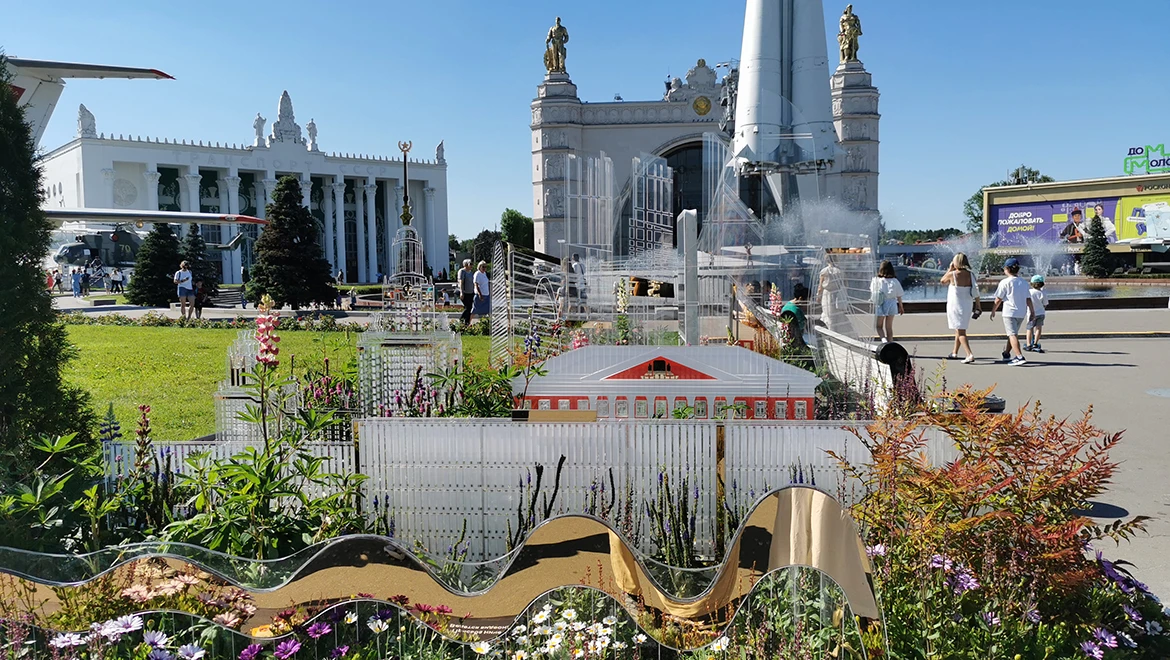Daurian rhododendron. Zabaykalsky region
Daurian rhododendron (Latin: Rhododendron dauricum) is a shrub 0.5-2 meters tall with dense, branching shoots that stretch upwards. It got its name from Dauria or Daurian Land. The Russians named this part of the Zabaykalye (Transbaikal) territory after the Daurs, a Mongolic-speaking people who lived there.
Daurian rhododendron has an unofficial but very popular folk name — bagulnik. The main wonder of this plant is its flowers. It is hard to imagine that such a hardy shrub, which grows literally on rocks, easily withstands forty-degree winters, and sprouts through the ashes of forest fires, can have such soft and delicate flowers.
Daurian rhododendron is listed in the Red Book. For the people of Transbaikalia, it is more than just a plant. It is a symbol of the region, a symbol of resilience and vitality. Therefore, the pavilion of Zabaykalsky region is shaped like a bagulnik.
In the past, rhododendron was actively used in folk medicine. It helps with cardiovascular diseases and normalizes blood pressure. For rheumatic pains, a special infusion of bagulnik leaves was recommended.
There is a beautiful but sad legend about how bagulnik came to be. It tells the story of a girl named Bagul and a young man named Nik, who fell in love but could not be together because their tribes were at war. In the end, the sweethearts held hands and jumped off a cliff. At the site of the tragedy, beautiful flowers grew, named after Bagul and Nik. In spring, they are among the first to bloom, symbolizing the triumph of love and warmth over the cold of winter.
Along with the RUSSIA EXPO, the flower festival is also coming to an end.
The "Future in Flowers" festival continues at the RUSSIA EXPO, where unique flowerbeds from all regions of our country can be seen at the "Space" pavilion until July 8.
The RUSSIA EXPO concludes on July 8, and with it, the flower festival will also come to an end.





